第19章
The activity of birds and insects proceeds without interruption, each species having its own separate times; the colonies of wasps, for instance, do not die off annually, leaving only the queens, as in cold climates; but the succession of generations and colonies goes on incessantly.It is never either spring, summer, or autumn, but each day is a combination of all three.
With the day and night always of equal length, the atmospheric disturbances of each day neutralising themselves before each succeeding morn; with the sun in its course proceeding midway across the sky, and the daily temperature the same within two or three degrees throughout the year--how grand in its perfect equilibrium and simplicity is the march of Nature under the equator!
Our evenings were generally fully employed preserving our collections, and making notes.We dined at four, and took tea about seven o'clock.Sometimes we walked to the city to see Brazilian life or enjoy the pleasures of European and American society.And so the time passed away from June 15th to August 26th.During this period we made two excursions of greater length to the rice and saw-mills of Magoary, an establishment owned by an American gentleman, Mr.Upton, situated on the banks of a creek in the heart of the forest, about twelve miles from Para.Iwill narrate some of the incidents of these excursions, and give an account of the more interesting observations made on the Natural History and inhabitants of these interior creeks and forests.
Our first trip to the mills was by land.The creek on whose banks they stand, the Iritiri, communicates with the river Pars, through another larger creek, the Magoary; so that there is a passage by water; but this is about twenty miles round.We started at sunrise, taking Isidoro with us.The road plunged at once into the forest after leaving Nazareth, so that in a few minutes we were enveloped in shade.For some distance the woods were of second growth, the original forest near the town having been formerly cleared or thinned.They were dense and impenetrable on account of the close growth of the young trees and the mass of thorny shrubs and creepers.These thickets swarmed with ants and ant-thrushes; they were also frequented by a species of puff-throated manikin, a little bird which flies occasionally across the road, emitting a strange noise, made, Ibelieve, with its wings, and resembling the clatter of a small wooden rattle.
A mile or a mile and a half further on, the character of the woods began to change, and we then found ourselves in the primaeval forest.The appearance was greatly different from that of the swampy tract I have already described.The land was rather more elevated and undulating; the many swamp plants with their long and broad leaves were wanting, and there was less underwood, although the trees were wider apart.Through this wilderness the road continued for seven or eight miles.The same unbroken forest extends all the way to Maranham and in other directions, as we were told, a distance of about 300 miles southward and eastward of Para.In almost every hollow part the road was crossed by a brook, whose cold, dark, leaf-stained waters were bridged over by tree trunks.The ground was carpeted, as usual, by Lycopodiums, but it was also encumbered with masses of vegetable debris and a thick coating of dead leaves.Fruits of many kinds were scattered about, amongst which were many sorts of beans, some of the pods a foot long, flat and leathery in texture, others hard as stone.In one place there was a quantity of large empty wooden vessels, which Isidoro told us fell from the Sapucaya tree.They are called Monkey's drinking-cups (Cuyas de Macaco), and are the capsules which contain the nuts sold under the name just mentioned, in Covent Garden Market.At the top of the vessel is a circular hole, in which a natural lid fits neatly.When the nuts are ripe this lid becomes loosened and the heavy cup falls with a crash, scattering the nuts over the ground.The tree which yields the nut (Lecythis ollaria), is of immense height.It is closely allied to the Brazil-nut tree (Bertholletia excelsa), whose seeds are also enclosed in large woody vessels; but these have no lid, and fall to the ground intact.This is the reason why the one kind of nut is so much dearer than the other.The Sapucaya is not less abundant, probably, than the Bertholletia, but its nuts in falling are scattered about and eaten by wild animals; whilst the full, whole capsules of Brazil-nuts are collected by the natives.
What attracted us chiefly were the colossal trees.The general run of trees had not remarkably thick stems; the great and uniform height to which they grow without emitting a branch, was a much more noticeable feature than their thickness; but at intervals of a furlong or so a veritable giant towered up.Only one of these monstrous trees can grow within a given space; it monopolises the domain, and none but individuals of much inferior size can find a footing near it.The cylindrical trunks of these larger trees were generally about twenty to twenty-five feet in circumference.Von Martius mentions having measured trees in the Para district belonging to various species (Symphonia coccinea, Lecythis sp.and Crataeva Tapia), which were fifty to sixty feet in girth at the point where they become cylindrical.The height of the vast column-like stems could not be less than 100 feet from the ground to their lowest branch.Mr.Leavens, at the sawmills, told me they frequently squared logs for sawing a hundred feet long, of the Pao d'Arco and the Massaranduba.The total height of these trees, stem and crown together, may be estimated at from 180 to 200 feet; where one of them stands, the vast dome of foliage rises above the other forest trees as a domed cathedral does above the other buildings in a city.
A very remarkable feature in these trees is the growth of buttress-shaped projections around the lower part of their stems.